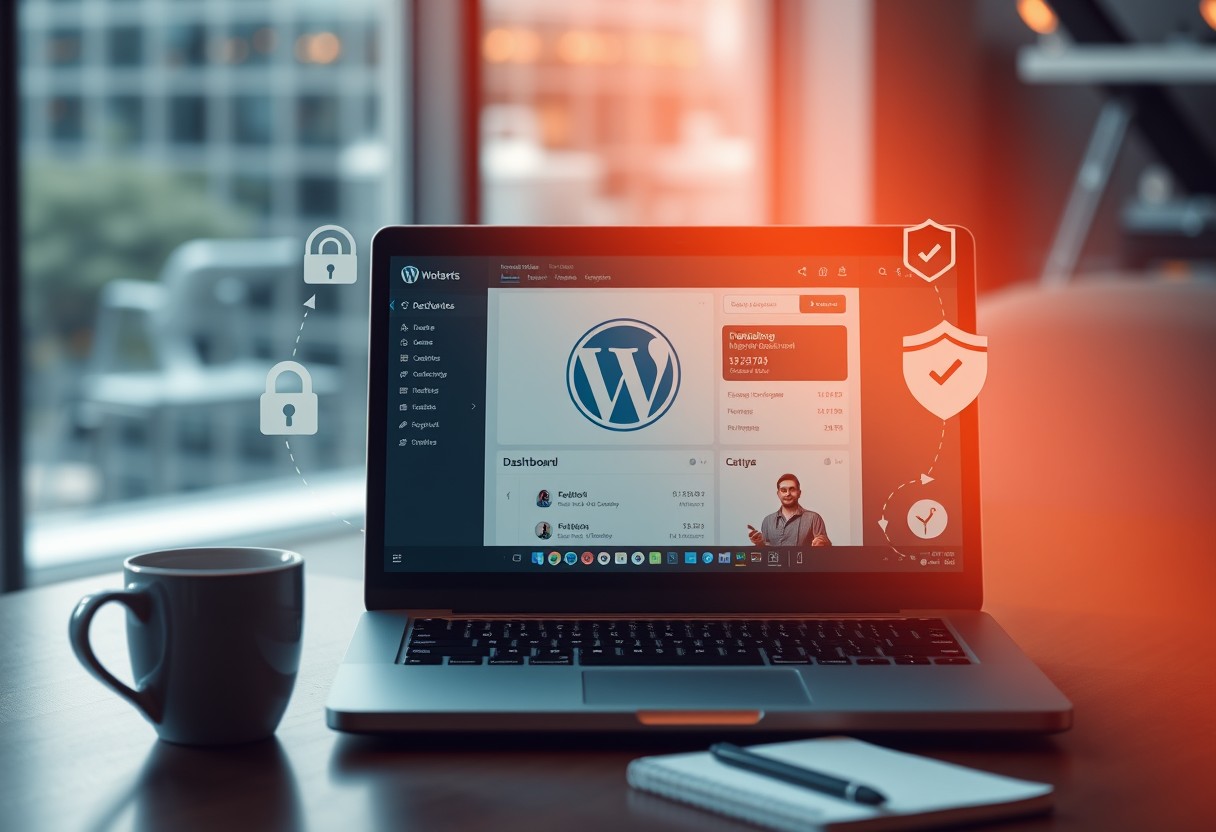Threats to your WordPress site can come from various sources, resulting in data loss, website downtime, and compromised safety for your visitors. To help you safeguard your site effectively, here’s a comprehensive guide on securing your WordPress site from potential threats.
First and foremost, ensure that you regularly update your WordPress core, themes, and plugins. Developers constantly release updates to patch known vulnerabilities. By keeping everything up to date, you significantly reduce the risk of being targeted by hackers looking to exploit outdated software.
Secondly, consider implementing a strong password policy. Use complex passwords that include a mix of uppercase and lowercase letters, numbers, and special characters. Encourage all users with access to your site to do the same. Password managers can help in creating and storing these complex passwords securely.
Additionally, you can enhance your site’s security with a two-factor authentication (2FA) system. This adds an extra layer of protection by requiring users to provide a second form of identification—often a code sent to their mobile device—when logging in. Many popular plugins are available that simplify the integration of 2FA into your WordPress site.
Next, install a reputable security plugin. Various plugins offer features such as malware scanning, firewall protection, and login attempt limiting. Tools like Wordfence, Sucuri Security, and iThemes Security can help you monitor your site and respond to any potential threats quickly.
Regularly backing up your site is another crucial aspect of maintaining security. Ensure that you are creating daily or weekly backups of your entire site, including the database and files. Use reliable backup solutions such as UpdraftPlus or BackupBuddy, as these enable you to restore your site easily if anything goes wrong.
Furthermore, consider switching from the default WordPress login URL to something custom or less predictable. The default URL (i.e., /wp-admin or /wp-login.php) is well-known and a common target for brute-force attacks. By changing it, you can reduce the likelihood of automated attacks from malicious actors.
Another crucial step is to limit the number of login attempts. This further protects your site from brute-force attacks. Many security plugins provide options to customize login attempt limits and block IP addresses that exceed them. Make sure you configure these settings to enhance your site’s security.
Monitoring your site for unusual activity is imperative. Keep an eye on your WordPress user accounts and permissions to ensure that no unauthorized changes have been made. You should also regularly check your site for any unexpected changes or unfamiliar files.
Lastly, use SSL encryption to secure data exchanged between your website and its visitors. An SSL certificate provides HTTPS, which not only helps protect your visitors’ information but also boosts your site’s credibility and can improve SEO rankings.
In summarization, securing your WordPress site from potential threats involves a multi-faceted approach that includes regular updates, strong passwords, two-factor authentication, and additional protective measures. By implementing these strategies, you can ensure that your site remains safe, maintaining both your data and the trust of your visitors.
Most website owners underestimate the importance of securing their WordPress site from potential threats. With over 40% of all websites running on WordPress, it has become a prime target for hackers and cybercriminals. In this guide, you’ll learn various strategies you can implement to protect your site and keep your data safe.
Firstly, keeping your WordPress core, themes, and plugins up to date is crucial. Vulnerabilities are constantly being identified and patched. By sticking to the latest versions, you significantly reduce the risk of security breaches. Set a reminder to check for updates weekly or consider enabling automatic updates for plugins and themes through your site’s dashboard.
Next, consider investing in a reliable security plugin. Plugins like Wordfence, Sucuri, or iThemes Security can provide real-time threat detection, firewall features, and malware scanning. After installing your chosen plugin, configure it properly to enable its full range of protective features. Regularly monitor your security logs for any suspicious activity that may require your attention.
Another key aspect of securing your WordPress site is to use strong and unique passwords. Avoid using easily guessable information like birthdays or names. You can use a password manager to generate and store complex passwords for your admin accounts, databases, and FTP accounts. Additionally, it’s advisable to limit the number of users with administrative access. Only give admin privileges to trusted individuals to minimize the risk of unauthorized access.
It’s also important to implement two-factor authentication (2FA) for your login process. With 2FA, even if a hacker obtains your password, they cannot access your account without the secondary verification code sent to your mobile device. Many security plugins, such as Wordfence, offer this feature to enhance your login security.
Regular backups should be part of your security strategy. Use a reliable backup plugin to schedule automatic backups of your content, including posts, themes, and database. Backing up your site ensures that even in the event of a malware attack, you can restore your site to its previous state quickly. Store your backups in a secure location, whether it’s on a cloud service or external hard drive.
You should also consider changing the default login URL of your WordPress site from “wp-login.php” to something unique. This simple change can deter automated bot attacks that target the default login page. Numerous plugins facilitate this customization, enhancing your site’s security.
Finally, take the time to regularly review your site’s user roles and permissions. Remove any unnecessary user accounts, particularly if they’re inactive or no longer needed. The fewer accounts you have with access to your WordPress site, the lower your risk of compromising your security.
By implementing these important strategies, you can secure your WordPress site from potential threats and ensure the safety of your data. Keep in mind, a proactive approach is crucial; the more prepared you are, the less likely you will fall victim to an attack.





